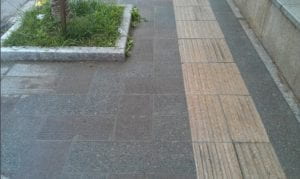In the presentation, David Rose analyzes the numbers of screens, which is pixel space, that has been rapidly increasing in recent years. On the one hand, as we say information era, the growth of the usage of screens expands people’s approach to information, and also makes it faster to spread information. However, on the other hand, the wide and fast spread of information will also have some negative effects, meanwhile, the exposure to such great amount of information may also confuse people.
He also talks about the uncanny valley, which is also very interesting. He said that as a robot gets more human-like, people will show more affection to such robot, but when it gets to a degree that is almost like a human, people feel fear and tend to dislike or hate the robot. I was very curious about the rise again part of the curve, and fortunately he explains this, that people will blur the concept of robots and people, thus getting used to them and like them again.
Another thing is enchanted objects. I think enchanted objects is really a good concept, and is very useful in daily life. The extraordinary functionality of this type of thing saves people’s time and brings more convenience to people.



